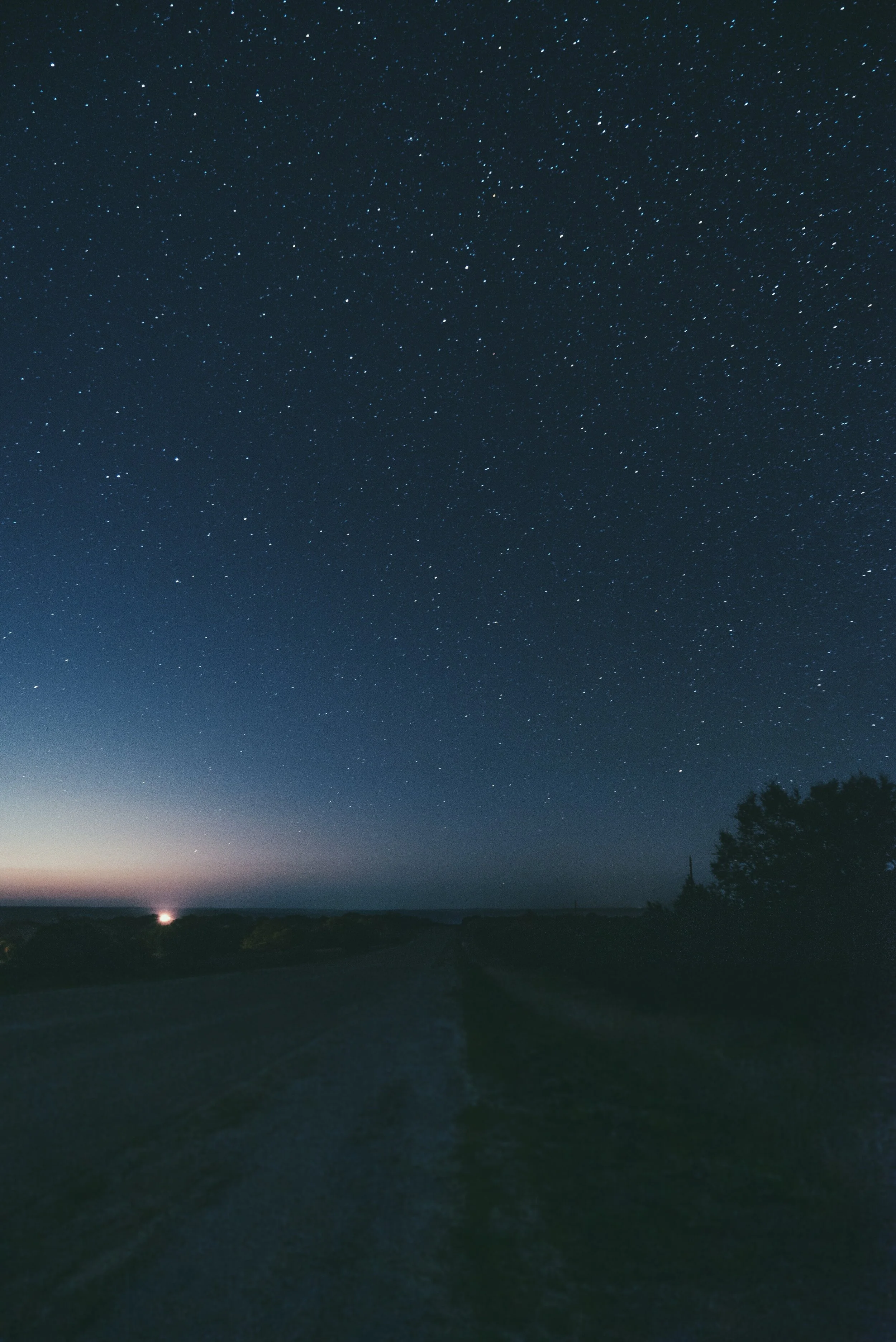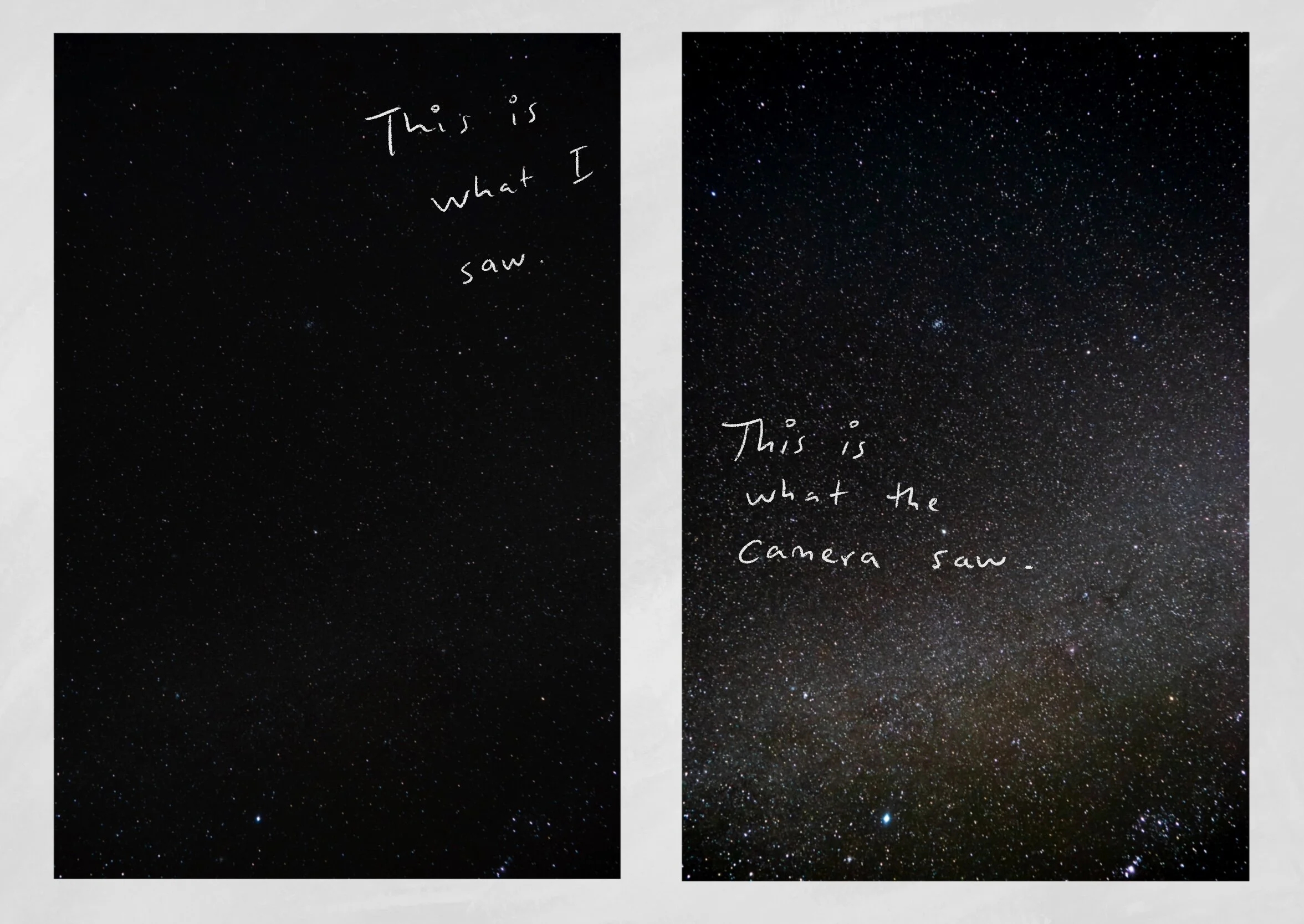Looking Close

I am flat on my back on an asphalt runway still warm from the day’s heat. The sun has set to the west and the moon followed it, leaving the further lights to fill the sky. The stars are glitter on a black floor and I feel my eyes widen in hopes of seeing a comet streak into vapor. I try, but am now unable to remember the sounds of that night. I suppose all brain function was diverted to the looking. And for good reason, for I found that the closer I looked the more there was to see.
The closer I looked, the more there was to see.
My 10 year old self knew this to be true, kneeling in a creek flipping rocks to net crawdads. Annie Dillard knew it well. She plumbed the depth of this looking while writing the novel, Pilgrim at Tinker Creek. In it, she returns again and yet again to her backyard creek in all seasons, and in all seasons discovers the endlessness of the world’s “spendthrift nature.”
“Waste and extravagance go together up and down the banks”, she writes. What a badass.
I am looking closer. Further, in this case of stargazing. The dark night burns away the fuzzy blue that follows a day spent glaring into the computer. I see colors blinking from behind the stars. It is as if I am inside of a giant Hefty trash bag with holes poked in its taut exterior, behind which is a madras of whirling colored dresses. It’s a strange image, no doubt, but these are exuberances of my Looking Self. A Self that is mostly locked up behind checklists, urgency, and importance. I do not have to elaborate here. If there is a word we collectively understand as Americans it is Busy. Busy is the water we swim in.
I pull out my camera and crank its aperture open. It’s been a while since I’ve used it for fun. Because of the way the camera is put together, its capacity to let light in is far greater than that of my eyes. For 20 seconds, it collects the twinkling starlight and the dark between before snapping shut. Standing under all the towering heavens, I peer down into the tiny LCD viewfinder to check the results. It’s not my first time taking photos at night. I’ve lugged this camera and tripod to some of the darkest places in the state for this purpose, yet even still I gawk at all that the camera sees. All that is beyond my seeing. Stars clutter the viewfinder like spilled salt. Where I see pure space, the camera sees 100 lights. The image appears almost cloudy.
So often, the camera comes between me and the subject. I feel a layer removed. The opposite is true here. I feel drawn into a bigger thing. There is more to see and I am seeing it, with help.
I’ve re-written this last paragraph four times over now. I’m tempted to become very grandiose. Instead, here’s the point: The wonders of this world are not running out. Awe is not a scarce resource. It’s not only the night sky that offers more than meets the eye. In windowsills and under rocks, in strangers and in dearly beloved there is newness that is ours for the taking, if we choose. But we must choose to.
Mary Oliver said it like this,
“Whoever you are, no matter how lonely,
the world offers itself to your imagination,
calls to you like the wild geese, harsh and exciting -
over and over announcing your place
in the family of things.”
-
Monologues are boring. Drop me a note in the comments!



